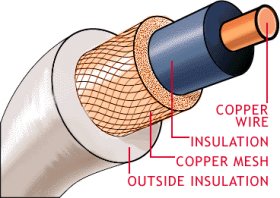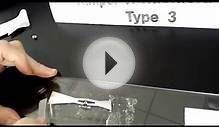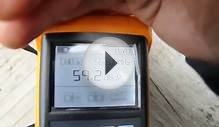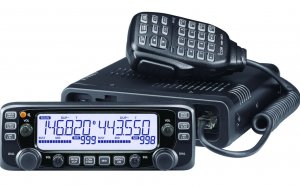
UHF antenna types
 This is a good concern, since the coax you decide on could make a remarkable huge difference regarding overall performance and selection of your antenna system. There clearly was an amazing array and alternatives of coaxial cable readily available and every type serves a different sort of purpose. This informative article highlights the most common kinds of cable and which ones tend to be ideal options for VHF/UHF antenna procedure.
This is a good concern, since the coax you decide on could make a remarkable huge difference regarding overall performance and selection of your antenna system. There clearly was an amazing array and alternatives of coaxial cable readily available and every type serves a different sort of purpose. This informative article highlights the most common kinds of cable and which ones tend to be ideal options for VHF/UHF antenna procedure.
All coaxial feedline cables will display signal loss. The quantity of loss is dependent on three factors, the building of this cable, the frequency for the sign, and the feedline size. Managing these variables is essential in enabling an excellent sign from your antenna system. As an example, RG-58 is a tremendously common cable and readily available at broadcast Shack and CB shops. But RG-58 features a high loss consider VHF and UHF frequencies, therefore it actually just is advantageous in works not as much as 50 legs for frequencies above 100 MHz, and 20 legs for frequencies above 400 MHz.
Reduced loss cable like RG-8U is perfect for 50-75 foot works within the VHF/UHF range. It really is reasonably inexpensive and easy to work with. Most ham radio shops or web merchants just like the Wireman or Cable Xperts carry RG-8U.
When your cable run is likely to be longer than 100 feet, or you are installing a UHF antenna for 70cm amateur radio, general public protection, or GMRS; however would recommend a decreased reduction cable like LMR-400, Belden 9913, or similar protected reduced reduction cables. These cables have a heavier center conductor and an extra layer of shielding to higher carry large frequencies with minimal loss.
Think about RG-59 or RG-6 cables? These coax cables can be available and primarily utilized for cable television installations. However they are matched for 75 Ohm television systems and will have an additional reduction element when applied to 50 Ohm radio communication systems. You should use RG-6 together with your radio, but due to the mismatch, 50% of one's signal should be immediately consumed up by the cable. That’s like turning a 50 watt radio into a 25 watt radio without factoring the feedline reduction yet. You could do it, but we don’t suggest it.
Feedline reduction is calculated in decibels (Db) per 100 legs. The decibel scale is logarithmic, so a loss in 3 Db is a 50percent lowering of energy. A 6db reduction is 50% on top of 50%, etc. If you have got 6 db of feedline reduction, your 50 watt signal taken from radio stations is going to be 12.5 watts because comes into the feedpoint regarding the antenna. The good news is that if the antenna has actually 6 db of gain (like the KB9VBR slim-jim Antenna) the signal would be increased so that as it exits the antenna, it will be near 50 watts once more. To determine your total losses or gains, you subtract the feedline loss and include the gains from antenna. The net result is your total gain or loss.
RELATED VIDEO



Share this Post
Related posts
UHF antenna direction
Presented because of the National Association of Broadcasters, PBS, and Stallions Satellite and Antenna Introduction T he…
Read MoreBest VHF UHF antenna
Answer: the theory that UHF cordless methods are inherently much better than VHF systems hence ISM (2.4 GHz) and UWB (6 GHz)…
Read More










